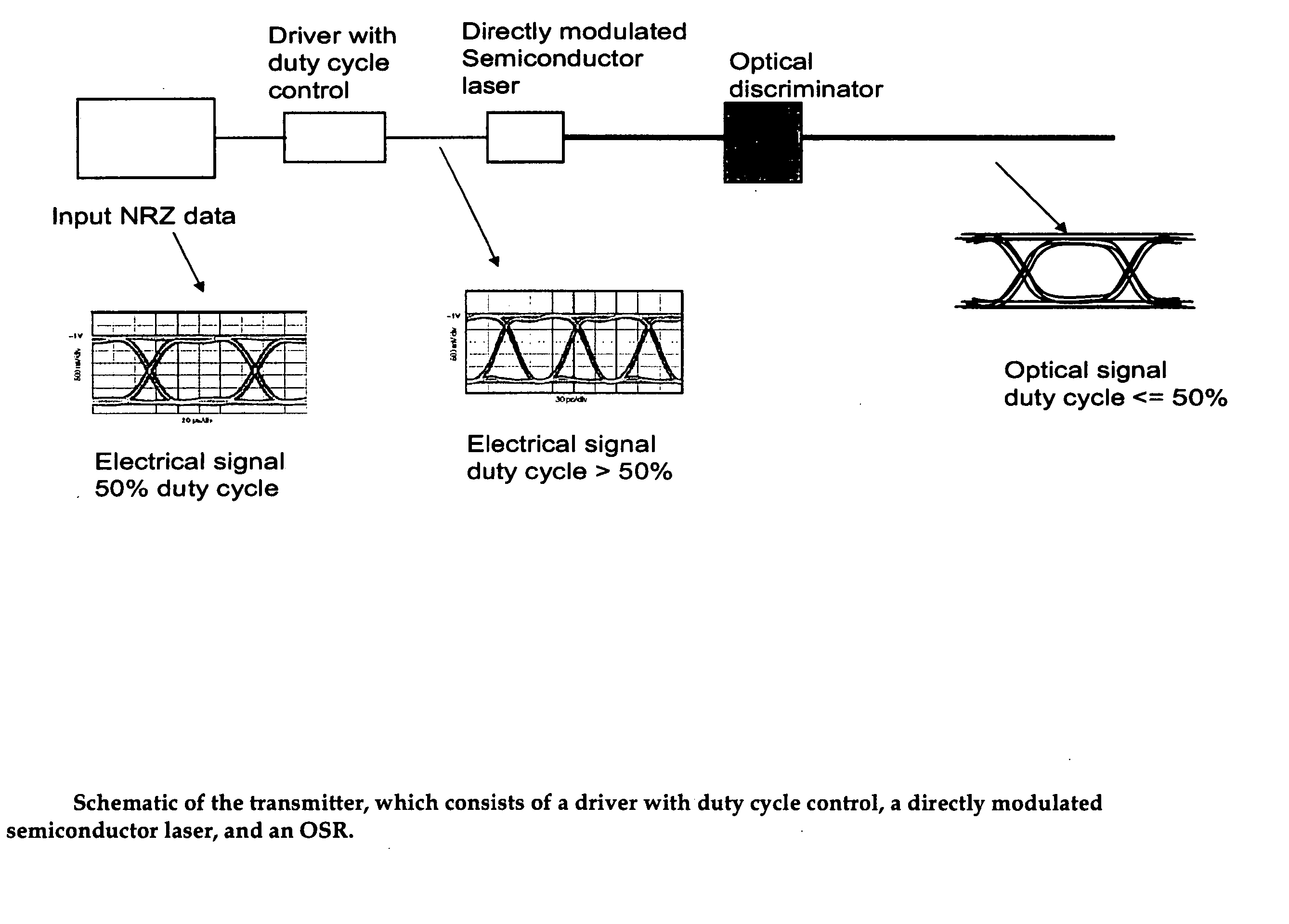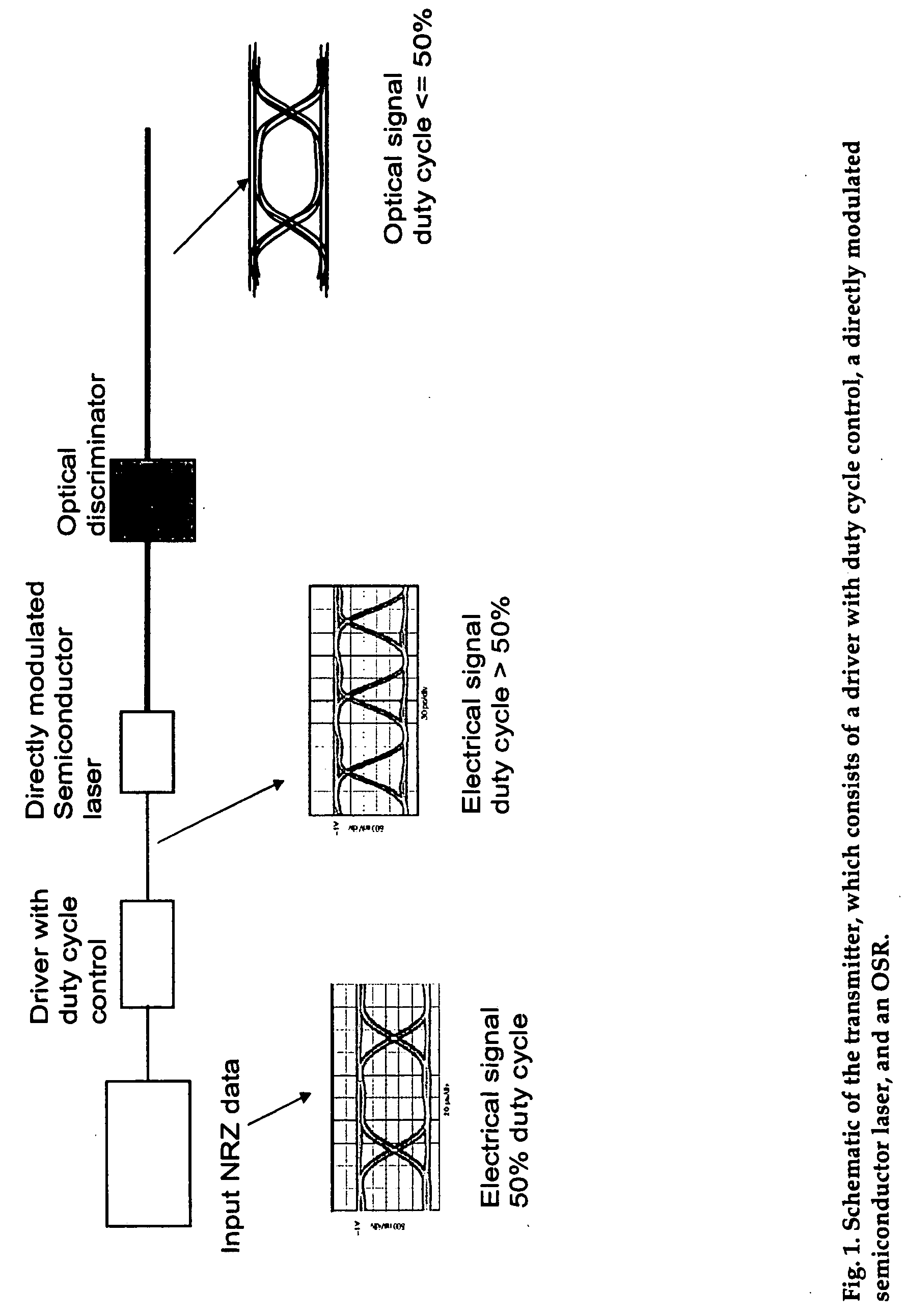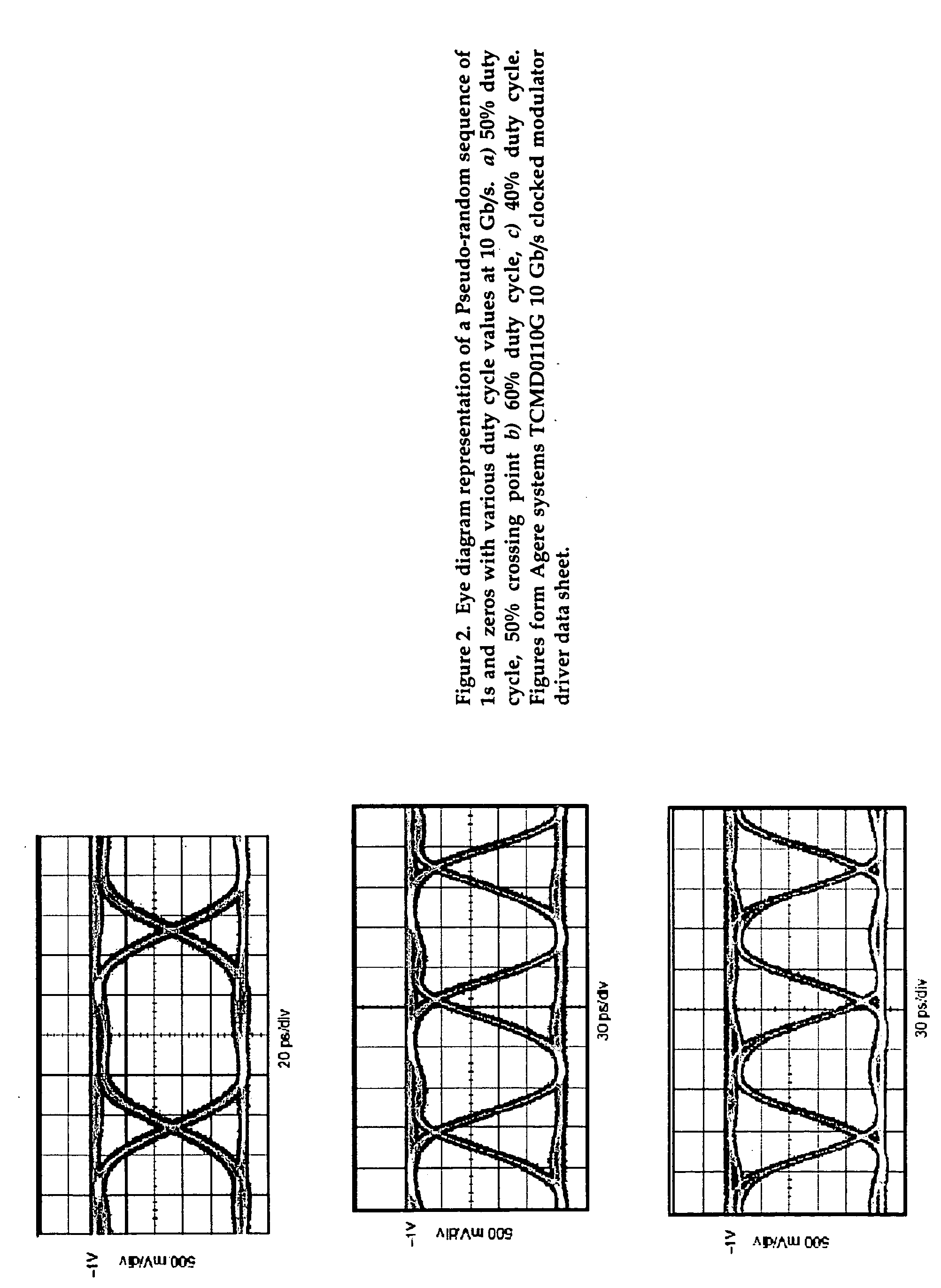Method and apparatus for transmitting a signal using thermal chirp management of a directly modulated transmitter
- Summary
- Abstract
- Description
- Claims
- Application Information
AI Technical Summary
Benefits of technology
Problems solved by technology
Method used
Image
Examples
Embodiment Construction
[0044] Looking first at FIG. 1, there is shown a Chirp Managed Directly Modulated laser (CMDML) transmitter which comprises a driver with duty cycle control (described below), a directly modulated semiconductor laser, and an optical spectrum reshaper (OSR), which may also be referred to as an optical discriminator (OD) or frequency discriminator (FD). In accordance with the present invention, the semiconductor laser is driven with a duty cycle higher than 50% to reduce the thermal chirp, and the optical signal reshaper (OSR) is used to reduce the duty cycle back to 50% (or a desired value, which may be different from 50%) before the signal is transmitted down the fiber.
[0045] Digital data consists of 1's and 0's, at a bit rate, B=1 / T, where T is the bit period. For a B=10 Gb / s system, T=100 ps. The 1 and 0 bits each occupy time durations τ1, and τ0, respectively, such that
τ1+τ0=2T. (1)
[0046] The duty cycle is defined as the fraction of the duration of the 1's to twice the bit pe...
PUM
 Login to View More
Login to View More Abstract
Description
Claims
Application Information
 Login to View More
Login to View More - R&D
- Intellectual Property
- Life Sciences
- Materials
- Tech Scout
- Unparalleled Data Quality
- Higher Quality Content
- 60% Fewer Hallucinations
Browse by: Latest US Patents, China's latest patents, Technical Efficacy Thesaurus, Application Domain, Technology Topic, Popular Technical Reports.
© 2025 PatSnap. All rights reserved.Legal|Privacy policy|Modern Slavery Act Transparency Statement|Sitemap|About US| Contact US: help@patsnap.com



